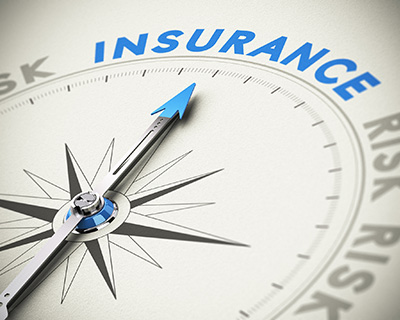When it comes to investing your money, there’s nothing scarier than the thought of losing your hard-earned nest egg. Vimal Chagan, Divisional Director of Asset Management at Liberty, explains how misunderstanding your real risks can lead to poor investment decisions.
It’s important to understand that investment risk comes in various shapes and forms. When we talk about investment risk, we usually think about losing money in the stock market or in an investment scam. In the case of a scam, the chance of losing all our money overnight is very real. But when it comes to investing in the stock market, a short-term reduction in the value of your investment is probable. However, you only realise the loss if you sell your position.
Unfortunately, the mistake many investors make is to panic and sell their shares when prices fall. They effectively sell these shares at a discount to a savvy investor. The investor who stays in the market – or buys at the bottom – is the one who benefits from the recovery. So the real investment risk here is not sticking to your original investment plan.>
Reap the rewards of a solid investment plan
There are two types of capital to consider when looking at investments and risk. The first is financial capital, which includes your balance sheet and comprises your current assets and liabilities. The second is human capital, which includes your earnings potential over your remaining lifetime. Your investment aim is for the sum of these to exceed your expected future expenses.
This is why you need a financial adviser to help you with your plan. A good investment plan considers your purpose for investing and takes into account the impact of market volatility. When selecting the appropriate investment, a financial adviser will take into consideration the following:
- How much do you have to invest?
- What growth do you need in order to achieve your goal?
- What level of certainty do you require in achieving that goal?
- What is the length of time you will be invested for?
- What asset classes will provide the best outcome based on your goal?
Three investment risks you must cover in your investment plan
1. Inflation risk
If you’re investing for more than three years, inflation risk becomes significant. In fact, the longer you are invested for, the greater the risk of inflation. At an inflation rate of 6% per annum, the purchasing power of your money will halve within 12 years and that equates to a permanent loss of your capital.
Everyone has a different level of experienced inflation. This needs to be taken into consideration when selecting the correct asset classes to invest in. The type of asset class needed to beat inflation would be determined by your own inflation rate. Not investing in growth assets, or keeping your money under the mattress, would be another form of investment risk.
2. Financial risk
While we tend to focus on our investments when it comes to accumulating wealth, we need to remember that our biggest risk when it comes to accumulating capital is not being able to earn an income or experiencing an event that wipes us out financially, such as serious illness or extended medical care.
While the probability of these events is small, the financial impact is so large that it cannot be self-insured. This is the primary purpose of insurance – pooling the risk of many people to make insurance against a catastrophe affordable. There are very few households that have sufficient assets accumulated to withstand a major event such as the unexpected loss of an income. Any long-term financial plan must have risk insurance as a building block. It’s like the foundation of a building – if it collapses, it takes the entire structure down with it. You leave yourself vulnerable to financial risk by not having the correct insurance cover.
3. Day-to-day risks
While major events can and should be insured, there is a level of self-insurance that also needs to be part of your risk analysis. Emergency savings should provide for small day-to-day emergencies such as a fridge going on the blink or an emergency trip to visit a sick parent. Larger risks, such as retrenchment, can be partly insured, but also require emergency funds.
By not having an emergency fund to cover life’s day-to-day events, one is often forced to draw down on longer-term savings or rely on emergency short-term debt. This increases your financial vulnerability and therefore your financial risk.
Share this article:
Linked In | Facebook | Twitter | Email
|












